Abstract
In 1985 an outbreak of ornithosis affected 13 of 80 (16%) workers in a duck-processing plant. New employees were three times more likely to become cases than established employees. The highest attack rate was in those on the production line. Following the outbreak, an occupational health scheme was set up to monitor the health of new recruits to the company. Serological evidence of recent infection was demonstrated in 18 of 37 (49%) new employees tested in the first 3 months of employment. Five (14%) also had clinical evidence of ornithosis. Veterinary investigation of the ducks demonstrated a high proportion with asymptomatic chlamydial infection. It is suggested that ornithosis may be more common in duck processors than is currently supposed. Strategies to reduce occupational risks are discussed.
Full text
PDF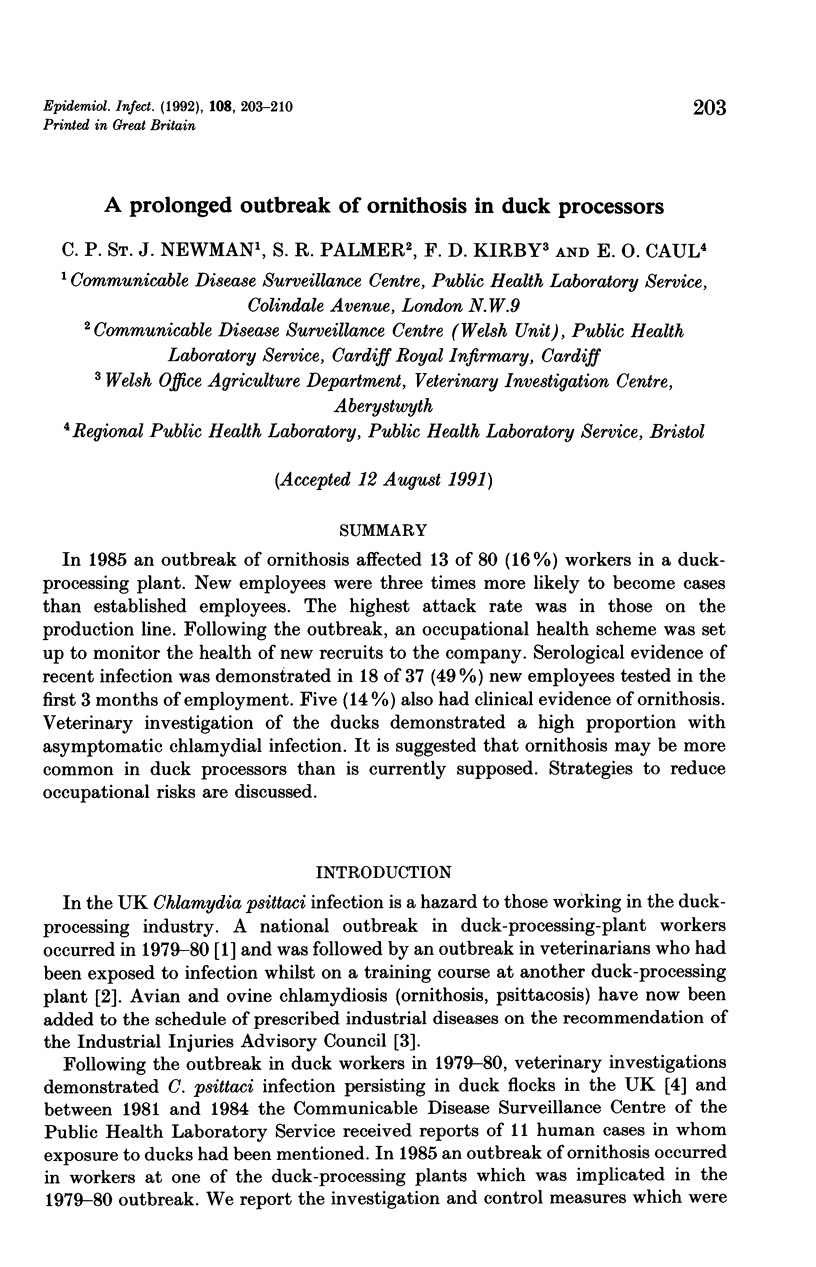
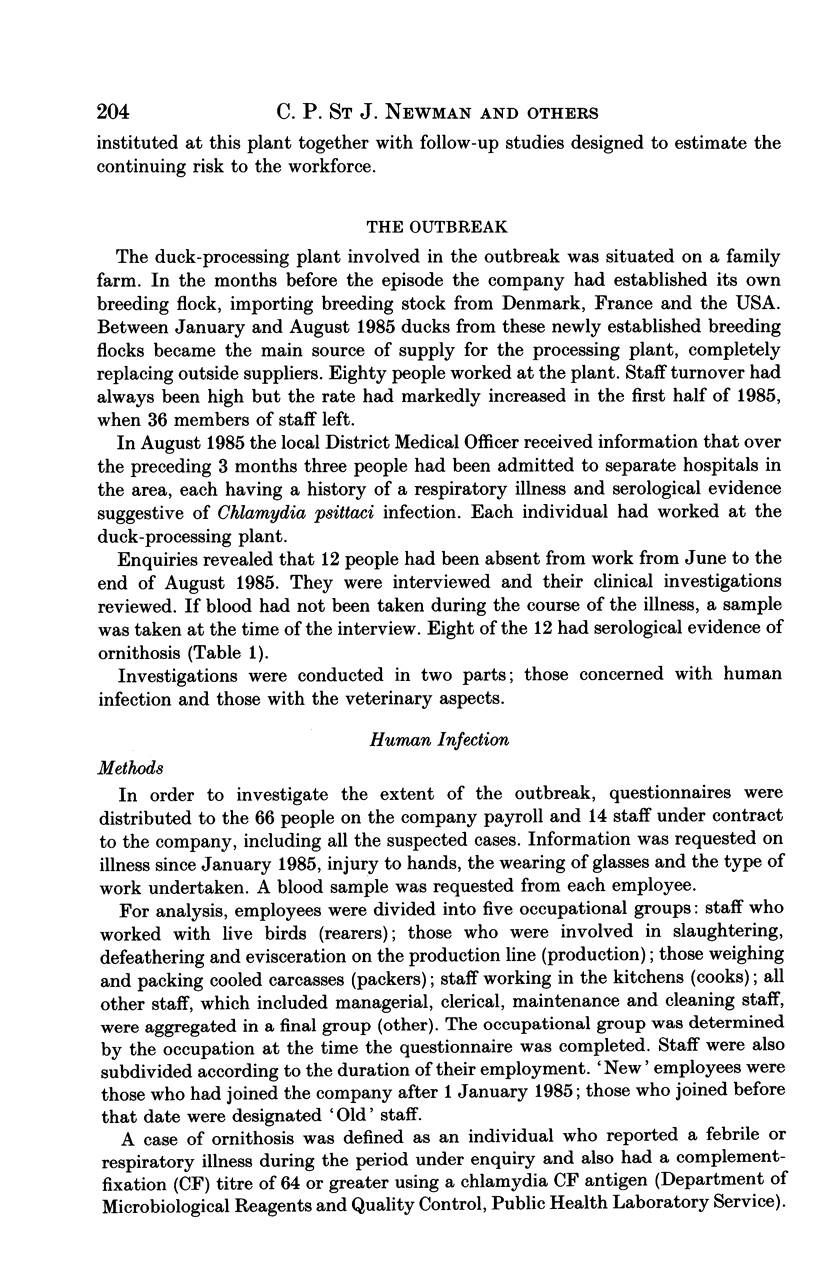
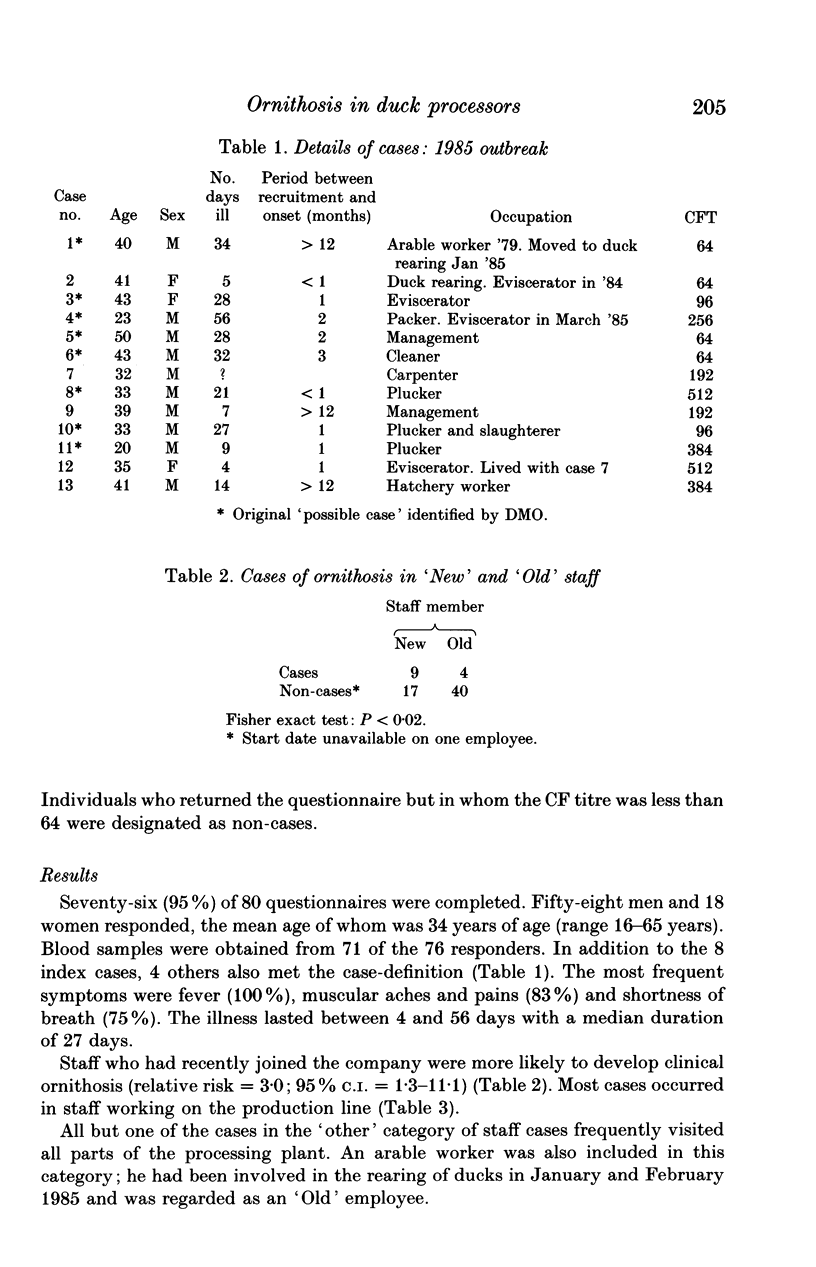
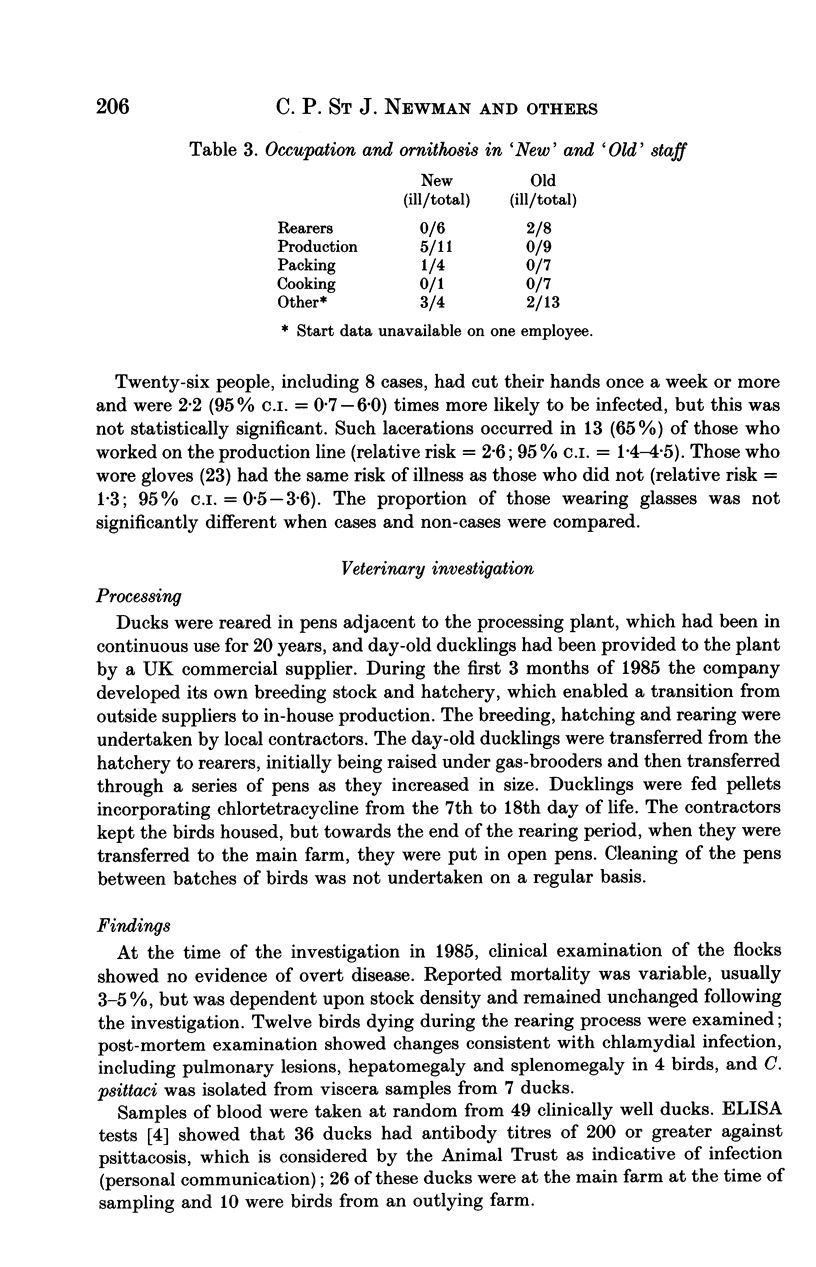
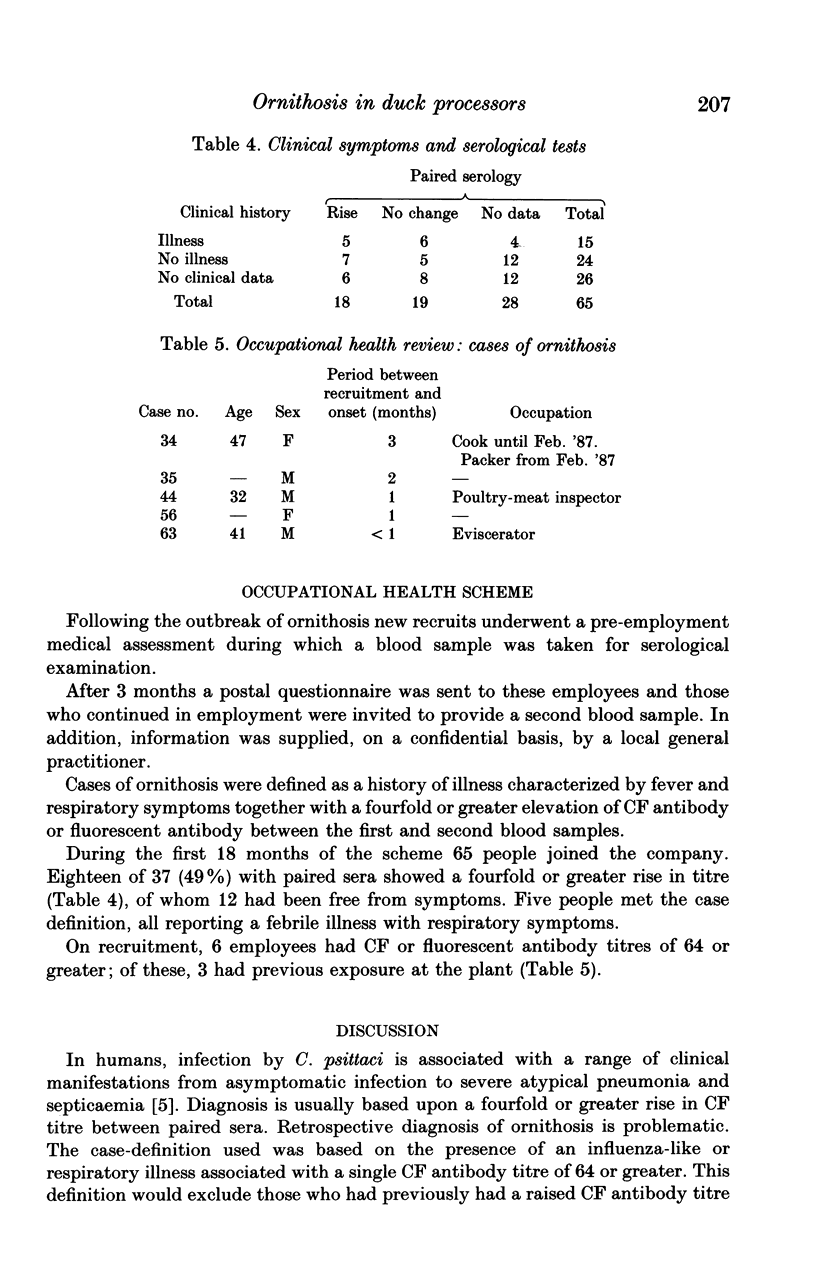

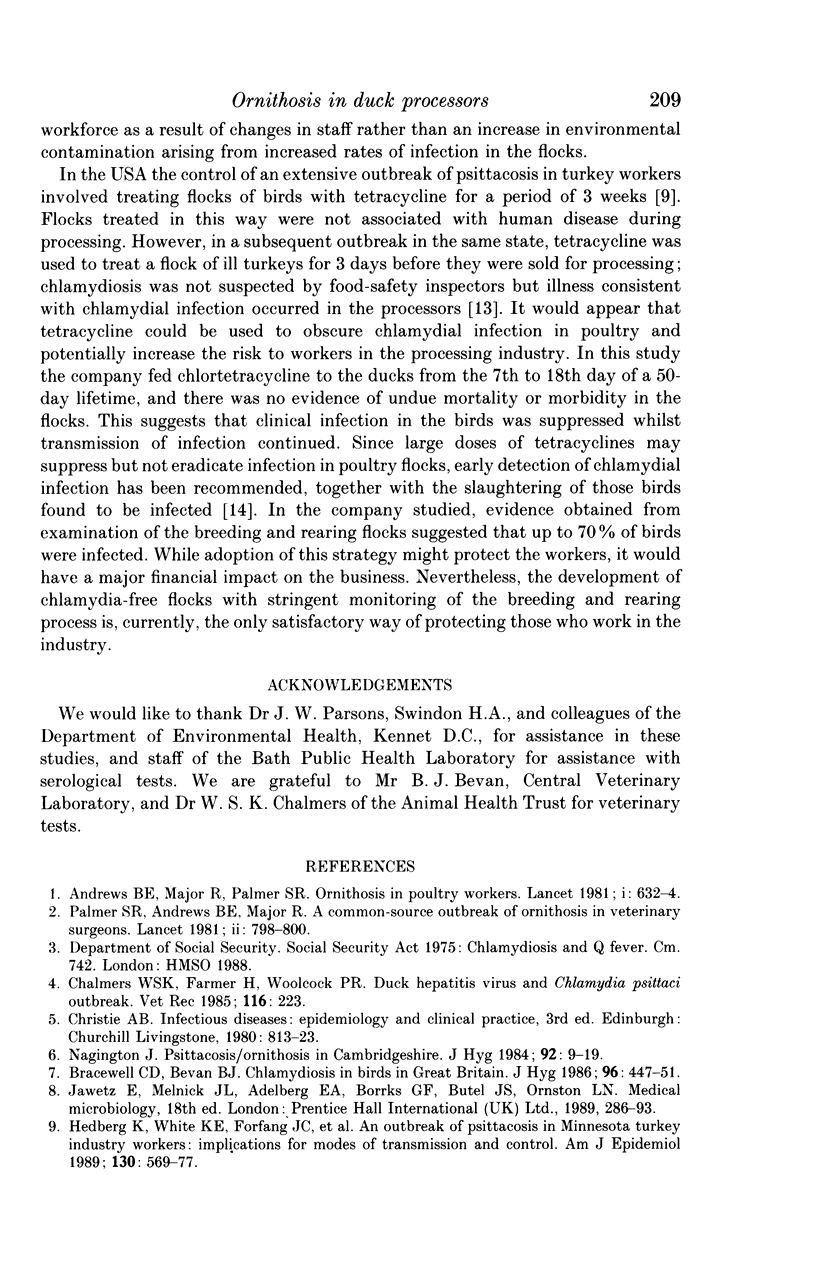
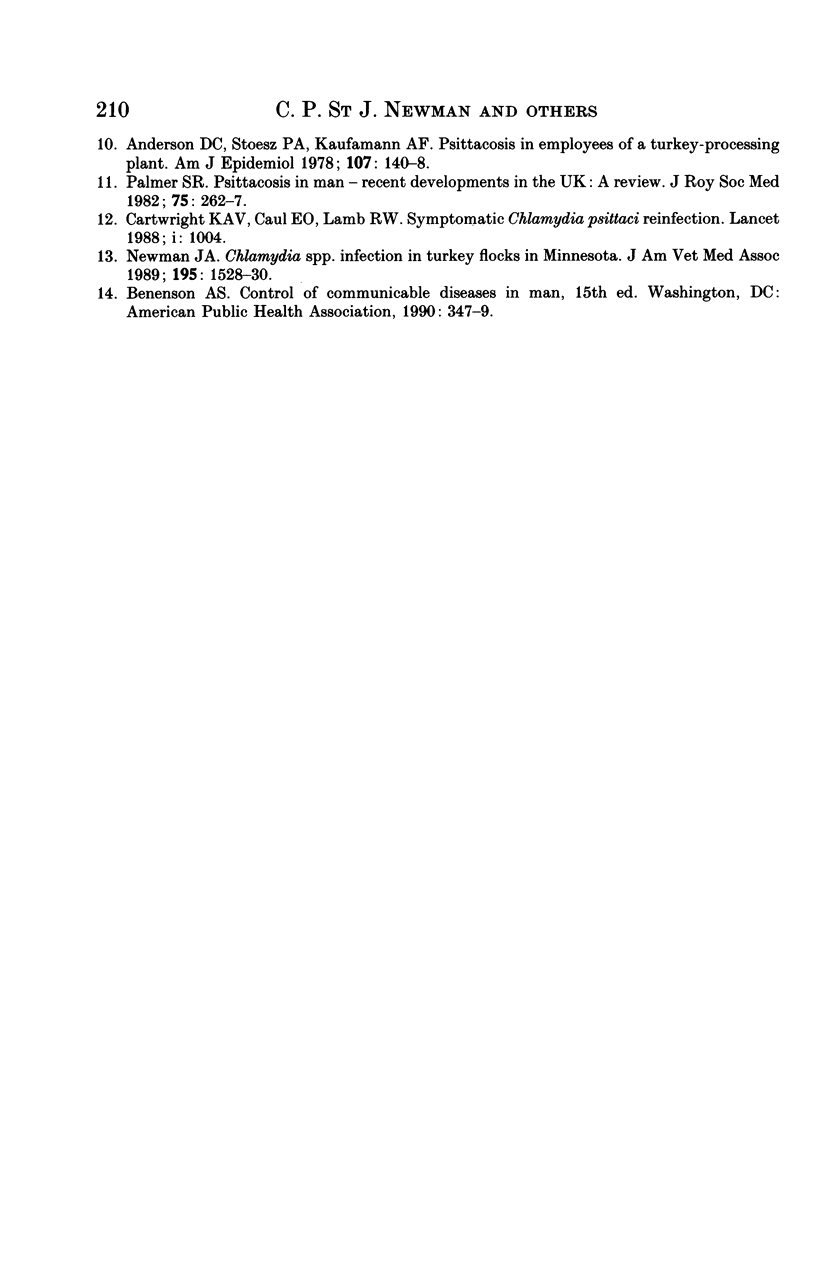
Selected References
These references are in PubMed. This may not be the complete list of references from this article.
- Anderson D. C., Stoesz P. A., Kaufmann A. F. Psittacosis outbreak in employees of a turkey-processing plant. Am J Epidemiol. 1978 Feb;107(2):140–148. doi: 10.1093/oxfordjournals.aje.a112516. [DOI] [PubMed] [Google Scholar]
- Andrews B. E., Major R., Palmer S. R. Ornithosis in poultry workers. Lancet. 1981 Mar 21;1(8221):632–634. doi: 10.1016/s0140-6736(81)91552-x. [DOI] [PubMed] [Google Scholar]
- Bracewell C. D., Bevan B. J. Chlamydiosis in birds in Great Britain. 1. Serological reactions to chlamydia in birds sampled between 1974 and 1983. J Hyg (Lond) 1986 Jun;96(3):447–451. doi: 10.1017/s0022172400066225. [DOI] [PMC free article] [PubMed] [Google Scholar]
- Cartwright K. A., Caul E. O., Lamb R. W. Symptomatic Chlamydia psittaci reinfection. Lancet. 1988 Apr 30;1(8592):1004–1004. doi: 10.1016/s0140-6736(88)91832-6. [DOI] [PubMed] [Google Scholar]
- Chalmers W. S., Farmer H., Woolcock P. R. Duck hepatitis virus and Chlamydia psittaci outbreak. Vet Rec. 1985 Feb 23;116(8):223–223. doi: 10.1136/vr.116.8.223-b. [DOI] [PubMed] [Google Scholar]
- Hedberg K., White K. E., Forfang J. C., Korlath J. A., Friendshuh K. A., Hedberg C. W., MacDonald K. L., Osterholm M. T. An outbreak of psittacosis in Minnesota turkey industry workers: implications for modes of transmission and control. Am J Epidemiol. 1989 Sep;130(3):569–577. doi: 10.1093/oxfordjournals.aje.a115371. [DOI] [PubMed] [Google Scholar]
- Nagington J. Psittacosis/ornithosis in Cambridgeshire 1975-1983. J Hyg (Lond) 1984 Feb;92(1):9–19. doi: 10.1017/s0022172400063981. [DOI] [PMC free article] [PubMed] [Google Scholar]
- Newman J. A. Chlamydia spp infection in turkey flocks in Minnesota. J Am Vet Med Assoc. 1989 Dec 1;195(11):1528–1530. [PubMed] [Google Scholar]
- Palmer S. R., Andrews B. E., Major R. A common-source outbreaks of ornithosis in veterinary surgeons. Lancet. 1981 Oct 10;2(8250):798–799. doi: 10.1016/s0140-6736(81)90199-9. [DOI] [PubMed] [Google Scholar]
- Palmer S. R. Psittacosis in man - recent developments in the UK: a review. J R Soc Med. 1982 Apr;75(4):262–267. doi: 10.1177/014107688207500412. [DOI] [PMC free article] [PubMed] [Google Scholar]


